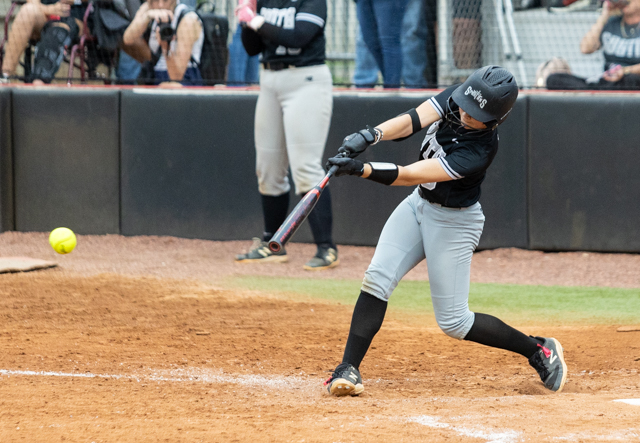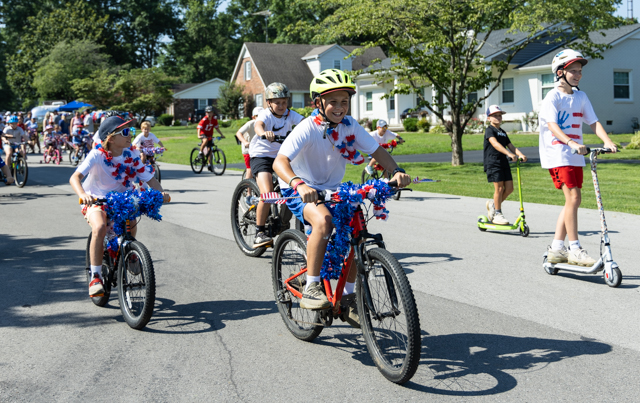John L. Edwards: Life’s A Gamble
Published 12:00 am Wednesday, March 5, 2008

- John L. Edwards: Life's A Gamble
Life was a struggle for most people in the early 30’s and John Edwards Sr. was no exception. He labored daily in the axe handle factory off Main street to feed and clothe his family. Then one day, as the family tale goes, he slammed down an axe handle and declared “I will never work for another man again!” Thus began a lifestyle that would continue for generations in the Edward’s family.
By the end of the decade, Edwards had built what one builder claimed was the nicest house in the state and owned most of the land along Louisville Road – all financed through gambling. Grandson Jerry Edwards claims that his grandfather was the largest bookie in Kentucky and the wealth he accumulated from his headquarters at the little roadhouse on Beech Bend Road was so enormous that the home he built for his family was constructed around a safe. His son, John L. Edwards, was groomed to follow in his footsteps and after his death took over the family tradition, building a life around booze, women and gambling.
Though taking bets on horse races was the most significant source of family income, John Edwards’ true obsession was with the game of pool. The peak of the Edwards’ power in Bowling Green was during the time when the city was dubbed Little Chicago due to all the criminal activity, particularly regarding drugs, gambling and prostitution, and Edwards is said to have been near the top of the food chain. His relative Pauline Tabor was also a major figure in the community and according to his son Jerry “My momma told me that daddy was mentioned several times in her book.” According to Jerry, John Edwards spent a significant amount of his free time in Pauline’s house of ill repute and was a favorite among the girls there as well as the women who’s husbands were away at war.
But the vast majority of Edwards time was spent behind the cue, and whether he is regarded as notable or notorious in Bowling Green’s history, none can deny the man could shoot pool. Nine time World Champion Buddy Hall of Paducah, in his book Rags to Rifleman retells the story of his first encounter with Edwards in a Nashville Pool Hall: “A top notcher had been watching the game. Neither Buddy nor Red recognized the man by sight. But, they knew the name, and the reputation that went with it. He was Johnny Edwards, out of Bowling Green, Kentucky. He had a nationwide reputation as a great player. Johnny appeared to be the last person on earth capable of shooting a pool ball into a bushel basket. His eyes looked like BB’s behind half inch thick eye glasses. Without those thick lenses, he had to be legally blind. He was a bit smaller than the average man, with the appearance of a bookworm, instead of a pool player.” After playing in Nashville, Hall accompanied Edwards to his home table in Bowling Green “ the result of this game was an experience that Buddy would never forget. Johnny spotted him the wild 7-ball all right, and along with it, he gave Buddy a licking that Rose Hill ointment couldn’t cure… No one had ever played pool against Buddy the way Johnny Edwards did that night. His reputation was not over-rated by any means. If anyone played Johnny in Bowling Green, they had better not miss, because the mistakes that Johnny made, were few and far between.”
Though he never held a title himself, preferring to play in the back room where the action (betting) was instead of on the tournament circuit, Edwards made an impression on more than one World Champion. Owensboro’s Nick Varner, several time World Champion named a shot in is book Winning Pool and Trick Shots after Edwards. He credits the 4 to 4 by John Edwards, saying “I wanted to name a shot after a friend who showed me how to kill and spin the cue ball.” These skills were his trade mark. Buddy Hall agrees “He had two outstanding strengths. He could shoot a slow rolling cue ball the length of the table, with a thousand rpm‘s of spin, hit an object ball so thin that it would only wiggle, or move maybe an inch, while bringing the cue ball back to the other end of he table, and, he could do it all night. He could hit a ball thinner and slower, while putting more distance between the object ball and the cue ball, than any man Buddy had ever seen. Safety shots like that, tend to test the nerves of the most experience pool players. Another outstanding strength was Johnny’s ability to kill the cue ball. All good players know how to kill the cue ball, but Johnny could flat murder it. If he needed an angle for his next shot, that required the cue ball to stay in the position of the ball he was shooting, Johnny could hit the object ball full, apply enough spin to the cue ball, to twist an object ball into a p0cket, and cause the cue ball to die in it’s tracks. When it came to that type of shot, Edwards had no equal.”
And Edwards spent alot of his time looking for an equal. His son Jerry said that people had suggested he was cheated of a father because “all his time was spent on poker, pool, craps and horses. He had to have that action, action, that’s what it’s about. He would gamble on anything”. he even heard rumors that his father won his first pool room in a bet. But Jerry doesn’t see that as having been a problem, “I never wanted for anything financially and I loved him dearly.” And the fruit doesn’t seem to have fallen too far from the tree. Though he says he declined accepting the bookie business, Jerry freely mingles his own exploits running poker games downtown, flipping coins for hundreds and betting sometimes thousands of dollars on pool games in avid detail when reminiscing about his father. Though today, most of Jerry’s bets are placed on a golf course rather than in a pool room, at one time both he and his brother and sister were at home in Johnson City and rooms around the region including their father’s. Brother John Edwards III or “Dumpy”, according to Jerry, played with their father as the first Father/Son team on the circuit. Likewise his sister Jo “Bug” Allison won the chance to compete for the World title and on one occasion said that the then women’s World Champion refused to play her after watching a few games, even when Bug offered to spot her a ball. Jerry reports himmself as being the best breaker in the country at one time, with a trade mark break fo sending the cue better than a foot into the air and landing still on the table.
Certainly it’s no surprise that John Edward’s progeny adopted his love of pool and lust of gambling. It is clear from talking with them that their daddy was larger than life, a true hero to them. “Everybody loved my daddy. And they respected him… When he played it was silent…. When he walked down the street everybody smiled… He was a walking legend” Of course it’s whispered in other circles that a heathy respect was prudent. And Jerry boldly states “There was a time in this town that I could have gotten away with murder.” But this view of their life circumstances is vastly overshadowed by the image of a world class pool player with a knack for picking the right bet. And clearly gambling is not something that is ever a problem in Jerry’s eyes: “90% of people subconsciously want to lose. I’m not a gambler I’m a sure thing”. John Edward’s bets certainly paid off in the financial sense, as he retained his wealth throughout his life, which gave way to colon cancer in 1984.
According to Jerry, it was Minnesota Fats who taught him that “every bet is won before it is played. It’s all in matching your game.” Jerry says that Minnesota Fats was not that great a pool player, but he was the best hustler that ever lived.” Minnesota was among many great players that John Edwards played against and was a friend to the family. Jerry remembers as a boy that Minnesota Fats told him that Bowling Green, Kentucky had more action than anywhere in the country when it came to booze, money and gambling. He also recalls the legendary player’s fascination with the nightclub at Lost River Cave, saying he’d never seen anything like it in the world. The list of other greats that Edwards challenged and according to Jerry, beat also includes: Al Coslosky, Bill Weenie Beanie Staton, Billy “Cornbread Red” Burge, Bob Bowles, “Boston Shorty” Johnson, “Champagne” Eddie Kelly, Cole Dickson, Eddie Taylor, Harold Worst, Hubert Cokes, Jack “Jersey Red” Breit, Johnny Ervolino, Lewis “Lefty” Goff, Luther “Wimpy” Lassiter, and “peter Rabbitt” Linhard.
Jerry also said he was told that the now famous Steve Mizerak was never able to beat his father in the four times that they challenged each other and one night he walked away with $18,000 of Mizerak’s money.
Another great that came to John Edward’s pool rooms like the Collegian and Guys and Dolls was Luther “Wimpy” Lassiter. Jerry heard that in 1971 he played a 12 game freeze out for $1000. John Edwards was down by 2, then he broke and ran the table 14 games in a row.
Jerry is currently gathering photographs such as the ones shown here for the editor of Pool & Billiard who is doing a series of articles on the great pool players during the golden age of the sport. He expects his father to appear in this series as well as a story in Sports Illustrated.
John Edwards originally met up with many of his opponents after being told by Eddie Taylor “Knoxville bear” that he could beat anyone and should place an ad in National Billiard News challenging anyone in the world. Later he would offer $1500 to anyone who would come to BG and play him, then play for double or nothing when they arrived. And Jerry says he beat them all, before it was over.
Kim Mason is the Content Manager of the Amplifier which was founded by her in 1995. She serves as Executive Director for the BG International Festival and designs websites. www.kimmason.ky.net






